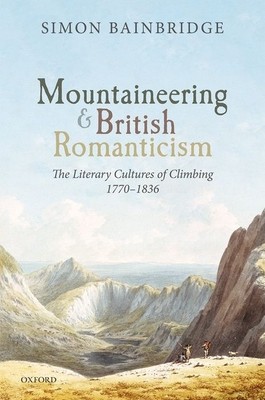
- We will send in 10–14 business days.
- Author: Simon Bainbridge
- Publisher: Oxford University Press, USA
- ISBN-10: 0198857896
- ISBN-13: 9780198857891
- Format: 16.3 x 23.6 x 2.5 cm, hardcover
- Language: English
- SAVE -10% with code: EXTRA
Reviews
Description
This book examines the relationship between Romantic-period writing and the activity that Samuel Taylor Coleridge christened 'mountaineering' in 1802. It argues that mountaineering developed as a pursuit in Britain during the Romantic era, earlier than is generally recognised, and shows how writers including William and Dorothy Wordsworth, Ann Radcliffe, Samuel Taylor Coleridge, John Keats, and Walter Scott were central to the activity's evolution. It explores how the desire for physical ascent shaped Romantic-period literary culture and investigates how the figure of the mountaineer became crucial to creative identities and literary outputs. Illustrated with 25 images from the period, the book shows how mountaineering in Britain had its origins in scientific research, antiquarian travel, and the search for the picturesque and the sublime. It considers how writers engaged with mountaineering's power dynamics and investigates issues including the politics of the summit view (what
Wordsworth terms 'visual sovereignty'), the relationships between different types of 'mountaineers', and the role of women in the developing cultures of ascent.
EXTRA 10 % discount with code: EXTRA
The promotion ends in 19d.22:06:09
The discount code is valid when purchasing from 10 €. Discounts do not stack.
- Author: Simon Bainbridge
- Publisher: Oxford University Press, USA
- ISBN-10: 0198857896
- ISBN-13: 9780198857891
- Format: 16.3 x 23.6 x 2.5 cm, hardcover
- Language: English English
This book examines the relationship between Romantic-period writing and the activity that Samuel Taylor Coleridge christened 'mountaineering' in 1802. It argues that mountaineering developed as a pursuit in Britain during the Romantic era, earlier than is generally recognised, and shows how writers including William and Dorothy Wordsworth, Ann Radcliffe, Samuel Taylor Coleridge, John Keats, and Walter Scott were central to the activity's evolution. It explores how the desire for physical ascent shaped Romantic-period literary culture and investigates how the figure of the mountaineer became crucial to creative identities and literary outputs. Illustrated with 25 images from the period, the book shows how mountaineering in Britain had its origins in scientific research, antiquarian travel, and the search for the picturesque and the sublime. It considers how writers engaged with mountaineering's power dynamics and investigates issues including the politics of the summit view (what
Wordsworth terms 'visual sovereignty'), the relationships between different types of 'mountaineers', and the role of women in the developing cultures of ascent.


Reviews